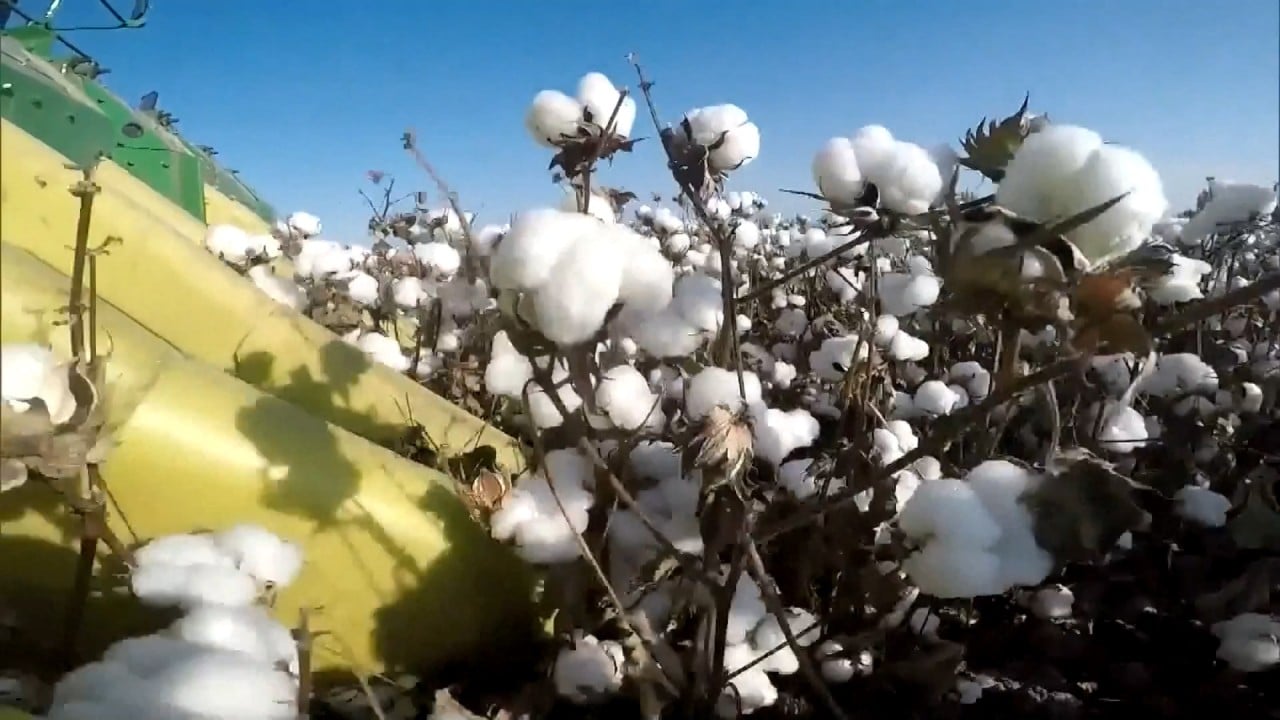
Exclusive | Xinjiang cotton ban, forced labour claims push China to step up plans for domestic Better Cotton Initiative
- Switzerland-based Better Cotton Initiative, launched to promote good practice in cotton industry, has been pressured over its handling of forced labour claims in Xinjiang
- Plans for the Weilai Cotton, or future cotton, project were made two years ago but were accelerated in January when the Better Cotton Initiative cut off ties with Xinjiang
Beijing-based cotton vertical service provider Zhongnong Guoji started the Weilai Cotton, or future cotton, project two years ago, but it did not make much progress until January when two state-backed organisations – the China Fashion Association and the Modern Seeds Development Fund – became involved, according to Zhao Yan, one of the coordinators for the project.
We have been living with Switzerland’s standards for years, but the country doesn’t even produce cotton. Now it is time to form our own national standards
“We have been living with Switzerland’s standards for years, but the country doesn’t even produce cotton. Now it is time to form our own national standards,” said Zhao.
The group may also establish a separate company called Weilai Cotton to run the day-to-day affairs and organise various events in the industry, added Zhao, with various preparations still ongoing before the project itself can be launched.
In March last year, the Better Cotton Initiative suspended licensing and assurance activities in Xinjiang due to “persistent allegations” of forced labour.
Then in October, it announced that it was withdrawing from the region, citing “sustained allegations of forced labour and other human rights abuses” leading to “an increasingly untenable operating environment”.
This was in stark contrast to a statement in January 2020, when it told industry publication Apparel Insider that neither its own investigations nor third-party audits found “any evidence of incidences of forced labour on farms within [Better Cotton Initiative] programmes”.
No explanation was offered for the contradictory messaging, but with the resulting storm of criticism from customers and Chinese officials gaining widespread attention around the world, Beijing decided to push ahead with the Weilai Cotton project.
We hope to improve the overall cotton quality in Xinjiang through this brand, as the cotton quality in Xinjiang is not as good as that of the US and Australia
“We hope to improve the overall cotton quality in Xinjiang through this brand, as the cotton quality in Xinjiang is not as good as that of the US and Australia,” said Luo Yan, secretary general of the Xinjiang Digital Cotton Research Centre, who took part in the early preparation of the project and helped with recruiting members in Xinjiang.
Weilai Cotton has recruited 32 members in Xinjiang, as well as some domestic fashion brands, according to Luo.
Improving the quality of Xinjiang cotton would be another way to mitigate the risks, Luo said, adding that the government had already started to offer subsidies to better quality products.
A cautionary tale of trying to be all things to all people
US sportswear retailer Nike also said it would no longer source products from the region and would also ensure that its suppliers were not using textiles or spun yarn from the region.
According to its website, the Better Cotton Initiative has 2,096 members around the world, including retailers, brands, suppliers and manufacturers, with 491 in China.
The Weilai Cotton project will first look to recruit Chinese brands before considering whether to recruit international brands, Zhao added.
All cotton garments will eventually be tagged with a QR code which will show “the entire supply chain”, according to Zhao.
“By scanning the QR code, you will be able see which farm the cotton is grown in, which cotton processing factory and yarn plant it went to next, and you can even trace how much fabric was purchased in the same batch,” Zhao said.



